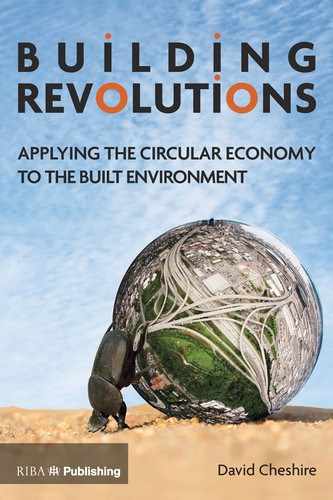Foreword
The construction industry accounts for approximately 60% of UK materials use and one third of all waste arisings. Buildings are stripped out every few years and often torn down well short of their design life with hardly any products or materials being reclaimed for reuse. This linear model of ‘take, make and dispose’ is depleting the world’s precious resources and is creating mountains of waste with very little scope for reclamation.
In a circular economy, resources are kept in use and their value is retained. This starts at the design stage, where products are designed for disassembly and reuse and new business models incentivise reclaiming, refurbishing or remanufacturing products. In the building industry’s current, linear model, topics such as materials selection, waste reduction, resource efficiency, adaptability and design for deconstruction are at best treated as separate issues. At worst they fall short of being considered due to the fragmentation of responsibility within the construction industry, as each discipline blames the next for a lack of holistic thinking or long-term vision.
Applying circular economy thinking to buildings provides an opportunity to draw together all of these seemingly disparate performance aspects into a cohesive whole that creates multiple benefits for people and the environment.
In this book, David Cheshire has created a simple framework and a set of circular economy principles specifically for the built environment. He goes on to explain each of these principles and uses case study examples to show how construction clients, designers and occupants can create a more regenerative built environment.
The case studies show that applying circular economy principles to buildings ensures that they use less resources, can be adapted to different uses and even provide healthier environments for people to live and work in. At the same time, the total cost of ownership can be reduced by engaging with the supply chain and by applying leasing models to shift the cost of upgrade and disposal of equipment back to the manufacturer.
Instead of designing buildings like there is no tomorrow, we need to think about the future of buildings and their users. The profligate attitude we have so far applied to construction resources will not be compatible with the priorities of future generations. It is high time we addressed this, and recognised our stewardship role over the planet’s finite resources. Such a transformation of the built environment industry is at the heart of the UK Green Building Council’s mission, so I welcome the work David Cheshire has put into articulating a different future for an industry with so much potential for greater efficiencies.
Julie Hirigoyen, CEO, UK Green Building Council
